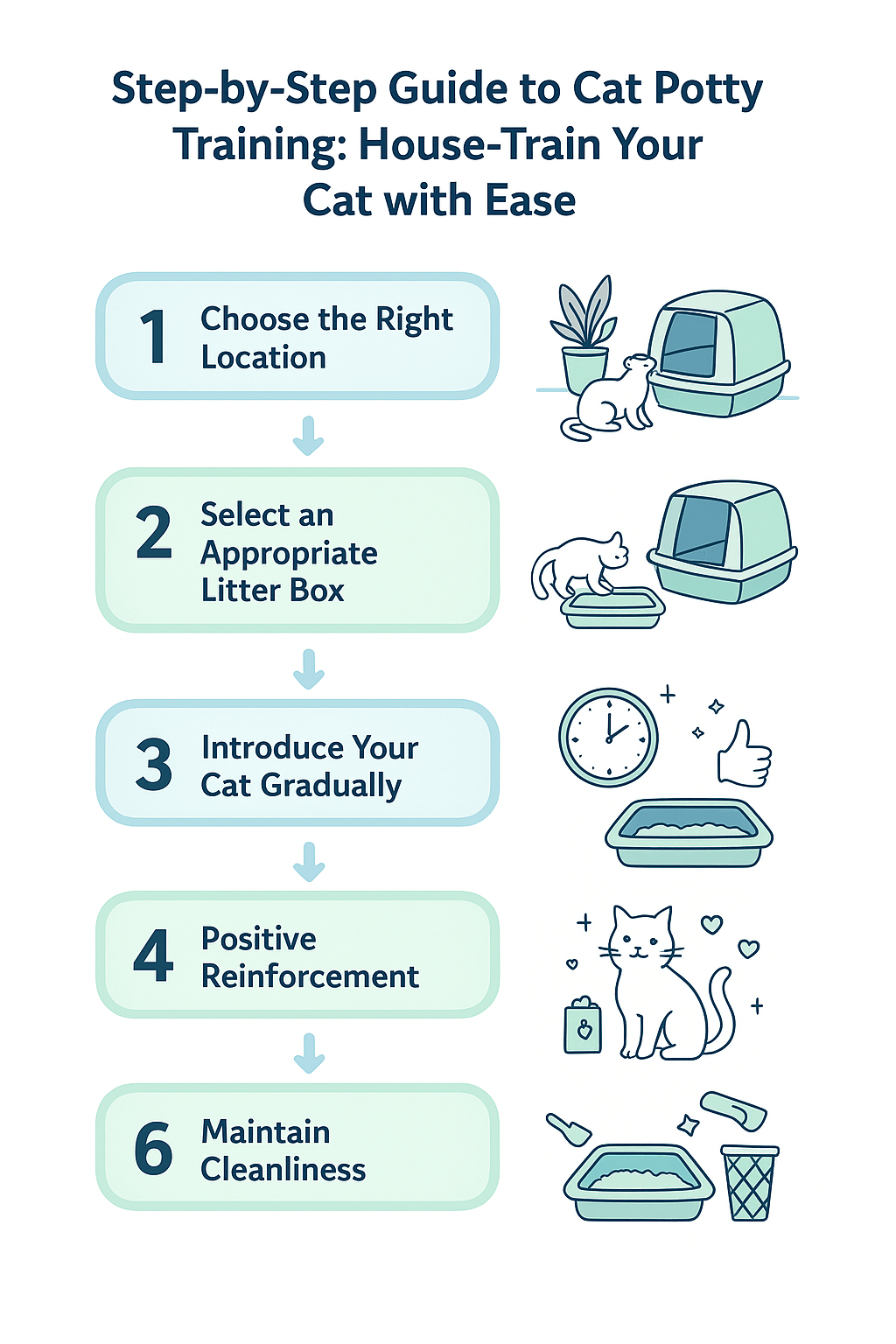
Step-by-Step Guide to Cat Potty Training (2025): House-Train Your Cat with Ease
Share
Quick Question & Short Answer: Nearly every cat can be reliably house-trained using consistent routines, proper litter box placement, and a clean, inviting bathroom space.
Why house-training is important
House-training helps create a stress-free home for both you and your cat. New owners, busy families, and anyone looking for a low-maintenance solution can benefit from modern options like a self cleaning cat litter box or smart cat litter box to support successful training.
Step-by-Step: How to house-train a cat

1. Choose the right litter box and location
- Select a box about 1.5× your cat’s body length to allow comfortable turning, as recommended by experts on kitten and cat litter box training.
- Place boxes in quiet, accessible areas away from food and appliances; a commonly suggested rule is one box per cat plus one extra (Humane Society guidance).
- Use clumping, unscented litter with 1–2 inches depth for optimal adoption, as discussed in ASPCA litter box recommendations.
2. Build a consistent routine
- Keep new cats in a small, safe area with the litter box for a few days; this encourages discovery and use (VCA Hospitals insight).
- Place the cat in the box after meals, naps, and play sessions when elimination is most likely.
- Reward successful use with calm praise or small treats; avoid punishment, which can hinder learning (Cornell Feline Health Center advice).
3. Maintain cleanliness and monitor behavior
- Scoop daily and clean fully on schedule; cats are sensitive to dirty litter (ASPCA guidance).
- For accidents, use enzymatic cleaners and review box size, placement, and litter type.
- If elimination outside the box persists or is accompanied by health changes, consult a veterinarian.
How smart litter boxes support training
Devices such as a self cleaning cat litter box or automatic cleaning cat box reduce odor and keep litter fresh, making them more attractive to cats. Research from PetMD on self-cleaning boxes indicates that consistent cleanliness supports positive litter habits.
| Benefits | Considerations |
|---|---|
| Consistently fresh litter, less scooping | Some cats need time to acclimate to noise or movement |
| Reduced odor and easy maintenance | Initial cost and occasional upkeep required |
| Supports multi-cat households | Placement and settings remain important |
Why Famistar is a great choice
The Famistar self-cleaning cat litter box minimizes manual scooping while maintaining a clean, odor-free environment, aligning with veterinary guidance for litter box hygiene. Learn more or purchase directly:
Common issues and solutions
- Too few boxes: follow one per cat plus one rule.
- Dirty boxes: scoop daily; smart boxes help but require regular emptying.
- Poor placement: ensure quiet, accessible locations away from traffic and food.
- Medical concerns: persistent accidents or sudden changes should prompt a veterinary consultation.
FAQs
How long will it take to house-train my cat?
Most kittens and cats adapt within a few days to weeks when boxes are clean and routines consistent; older or stressed cats may need more time, as highlighted in VCA Hospitals training guidance.
Will an automatic cleaning cat box replace training?
No — it supports training by maintaining an appealing environment but cannot replace proper placement, litter type, and consistent routines (PetMD analysis).
What should I do if my cat goes outside the box?
Clean with an enzymatic cleaner, reassess box location and litter, and consult a veterinarian if the behavior persists (Cornell Feline Health Center).
Conclusion
House-training your cat becomes simple when combining expert-backed practices — correct box size, location, regular cleaning, and positive reinforcement — with modern conveniences like a Famistar self cleaning cat litter box. It reduces chores while keeping the box inviting for your cat.


